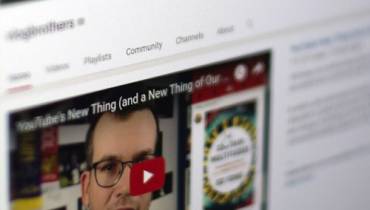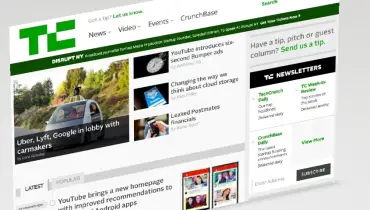10 Tips for Writing Compelling B2B Marketing Content

Business to business (B2B) marketing is one of the most niche content marketing industries. Relatively hidden from the eyes of the consumer world, B2B marketing requires a certain edge and mastery to produce effective results.
Whereas for public marketing you can rely on things like humor, funny cat videos, and other kinds of disposable media, B2B marketing has a few rules, guidelines and restrictions you need to abide by.
Guidelines to Abide by When Doing B2B Marketing
It doesn’t mean you can’t include funny cat videos in B2B marketing copy if you want to, but your content still needs to be engaging. It needs to be engaging in a different way to business to consumer (B2C) content posts.
To give you a helping hand in crafting your B2B marketing copy, here are ten tips to help you create the best B2B content you can.
1. Be Direct
Individuals who are reading your business posts may not have a lot of time. In B2C marketing, you can take your time in reeling the lead into your content, creating a nice story for them to follow or lots of pictures to catch their attention.
However, B2B content needs to be straight to the point and as short as possible. This allows the individuals reading it to take the information they need or want quickly and without the tassels.
2. Stay Engaging
No matter who you’re marketing to, don’t be boring. Even if you’re writing about something that, at its core, is boring, find ways to make it exciting, or at the very least, interesting.
For example, if you’re writing about cat litter, after your first draft, consider the language you’re using, the structure of the document and find ways to make it punchy and impactful.
3. Conversational Writing Style
In the workplace, people speak business terms and slang day in and day out. In reality, that’s not how people want to speak to each other, but they’ve got no choice.
In your content, speak directly to the reader as though you were speaking to them face to face. Cut out the business terms and just have a conversation with them. The readers are much more likely to connect to this than a list of jargon they don’t want to be reading.
4. Humor
Humor is an important part of business content writing. If you’re naturally funny, this is even better, and it’s perfect for making something that is considered boring, rather exciting.
If you’re able to put a smile on your reader’s face, you can rest assured that you’ve connected with that reader and they are much more likely to pay attention to what you’re saying in your content.
5. Break It Up
What kind of employee doesn’t like a break? The same should be said of your writing.
Look at the structure of this article. Short paragraphs mean you’re able to absorb the information you need quickly before having a break and then moving on to the next piece.
A good guideline to follow is using big bold headers to cut up your text and ensure your paragraphs are never longer than a couple of hundred words.
6. Graphics and Visuals
One of the main things a good content writer learns is to use graphics and visuals. Statistically, visuals or images will improve your click rates by as much as 70%.
Readers are much more likely to engage with a piece of content if they have something nice to look at. Visuals in the form of infographics, charts and graphs are a more interesting way of conveying data than a table or spreadsheet.
So, use graphics and visuals to your advantage.
7. Take Their Breath Away
Whether you’re writing a captivating headline for your B2B readers or looking for new ways to hook your leads to draw them in, shock is one of the best ways to ensure your content is as compelling as it can be.
Regarding headlines, if you say, for example, ‘Increase Your Click-Through Rate by as much as 200%’, what marketer or CEO isn’t going to want to read that?
The same can be said of paragraphs in your content. Use studies and researches that can be found online to back up the shocking or surprising points you are making that your reader wouldn’t easily just believe.
8. 3, 2, 1... Call to ACTION!
The language you use in your content is key to its success. Calls to action are effective methods of capturing a reader’s attention and almost always will result in a response. Being direct with your language and not dancing around what you are trying to say is the best way to grab someone’s attention.
For example, if you’re writing B2B emails on your company’s latest product launch, a subject line such as, ‘Don’t Miss the Latest Release From *Your Company*’ instantly grabs their attention and makes them want to know more.
‘Don’t Miss’ is the obvious actionable language here, but you can use other actionable words, including buy, sell, order, download, respond, sign up, log in and click here. These are simple keywords that have such a big effect on the reader, oftentimes without them even knowing it.
9. Make It Personal
Nobody likes reading generic content. It’s boring, it’s monotonous, and it simply rehashes what your readers have probably read online elsewhere.
Add a personal edge to your writing that really helps it come to life. Give each piece of content you write its own personality. This could be the personality of your business, of yourself or simply something you’ve generated or gathered along the way in your writings.
10. Content That’s Beneficial
No matter what you’re writing about, you need to define the purpose of every piece of content, and write in such a way that it will benefit the reader in some way. Maybe you’re trying to inform or educate them about something. Maybe you’re trying to sell something to them, or maybe you’re trying to get them to take action.
Whatever your purpose is, describe the benefits of them knowing this information throughout your content. For example, if you’re trying to sell a product, don’t merely list out the features of the product; tell them how it will change their lives for the better.
See Also: 6 Ideas for Writing a Blog Post that Acts Like a Sales Copy.













![Chronicles For Freedom: Colson Whitehead's The Underground Railroad [node:title]](/sites/default/files/styles/video_thumbnail_bottom/public/colson_whitehead2-620x412.jpg?itok=4grydayI)





